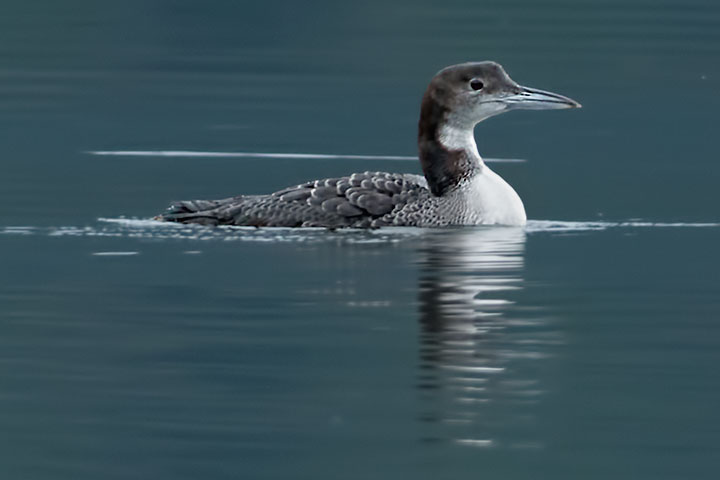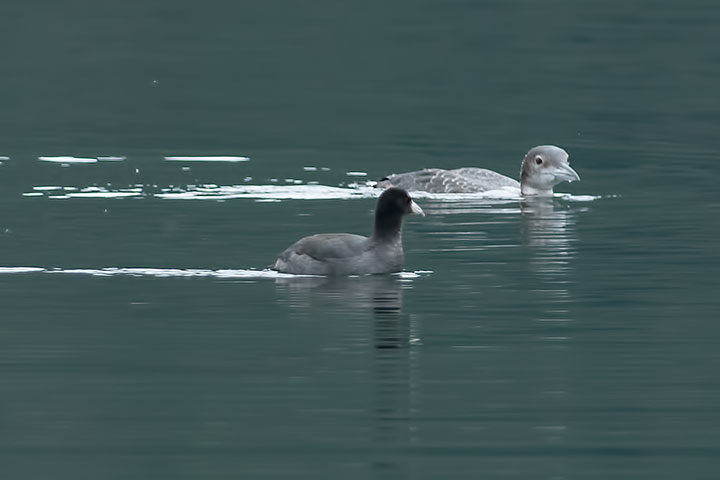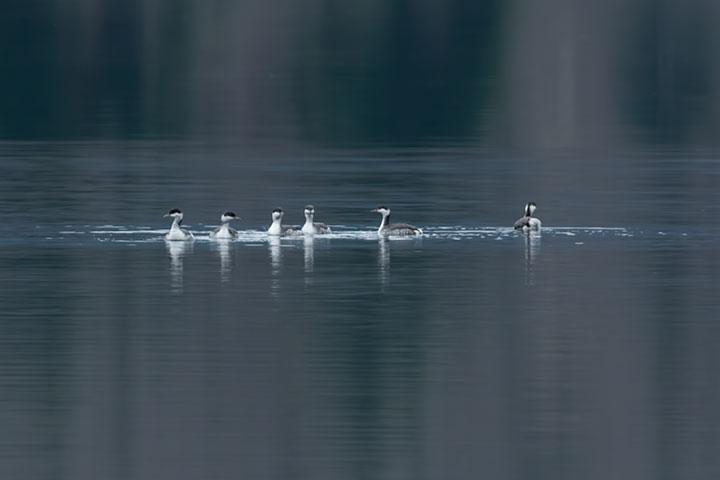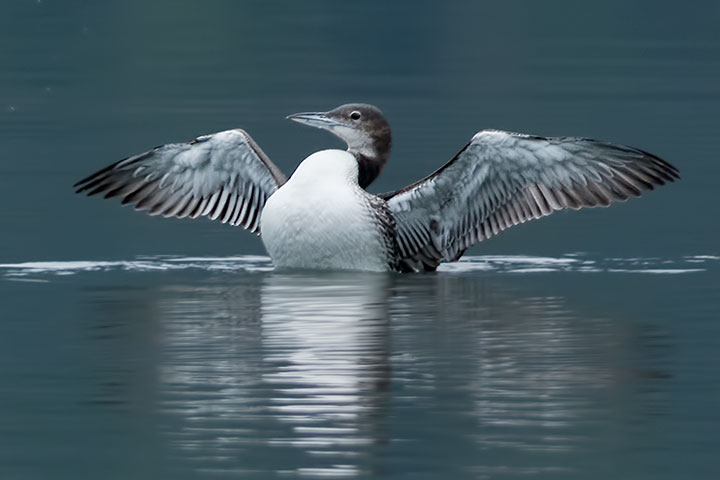Most loons have left the Lake for the Coast by mid-fall. A few stragglers can sometimes be seen in the winter, but I had not seen one previously. (All my earlier loon pictures were taken from April to October.)
In its nonbreeding plumage, this Common Loon is one of four seen in late December. Its breeding plumage is seen from March to October.
A view of a coot and a loon in the same scene is an unusual local sight. Normally, the loon is here in the summer and the coot is here in the winter. Being gregarious, this lone coot had previously tried unsuccessfully to hang out with grebes; now, it approached the loon. The loon promptly dived and left a still lonely coot.
Six Horned Grebes watched from afar. They knew better than to try to hang out with a loon.
“I am loon; admire my finery. The only other species I need have fins.”

Do U think maybe the unusual sitings of normally gone south birds is a sign of global warming??
Wes, certainly that could be an influence, but occasional winter loons have been seen here for years—just not by me.